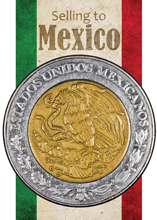Tariff information can be found from commodity trade groups, the office of the U.S. Trade Representative, or the USDA’s Foreign Agricultural Service.
“You have to get with either the U.S. trade representative’s office or go online and search Harmonized Tariff codes to find out if there are specific tariffs in place, and when they are in place—duties and tariffs aren’t on all commodities, all the time. There might be times during the year when there aren’t any,” explains Papangellin.
Prior to the actual shipping of any product into Mexico, each item must be classified according to the aforementioned Harmonized Tariff Schedule, which is handled by the Ministry of Commerce and also by customs authorities under the Ministry of Treasury, Colter-Carswell says.
An extreme example of the system gone awry occurred from 2009 to 2011, when some commodities exported to Mexico were subject to prohibitively high tariffs. A retaliatory move due to the discontinuation of the troubled U.S.-Mexico Cross-Border Trucking Pilot Program (which was resolved, then later dissolved in 2014), the tariffs proved disastrous to exporters of fruit, particularly grapes.
Of course, there are other risks as well. Of bigger concern to some produce companies is sending personnel to investigate export opportunities, as safety concerns have plagued Mexico in recent years due to drug-related violence and crime.
Cordova says he used to travel to Mexico frequently, but admits he has cut back. It is important to note, however, that since Mexican President Enrique Peña Nieto’s much-heralded crackdown on drug crime, media reports have indicated the violence has decreased significantly.
Cutting the Red Tape
Research is also needed so a new exporter is not tripped up by red tape. “You need to know the import laws, restrictions, requirements, and the phytosanitary issues that are involved on the Mexican side,” Papangellin says. “Regarding the crops you currently produce or market, are they registered and following the export protocols necessary to be successfully imported on the Mexican side? You need to do your due diligence, your ‘homework,’ and that’s where the USDA or local grower organizations or associations should be able to help.”
Miller adds that Mexico has two major requirements for imports of U.S. product. “They require phytosanitary certificates and also heat-treated pallets. In addition, some products call for seals on trailers. And Mexico has a zero soil tolerance, so if a load has dirt or soil on the product it can be refused at the border.”



